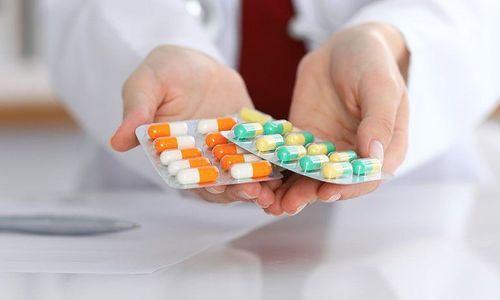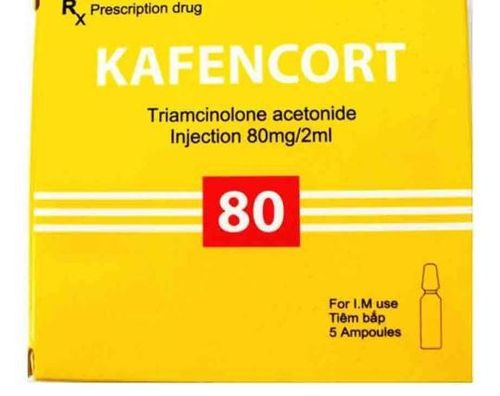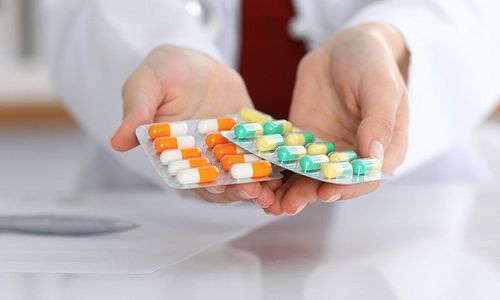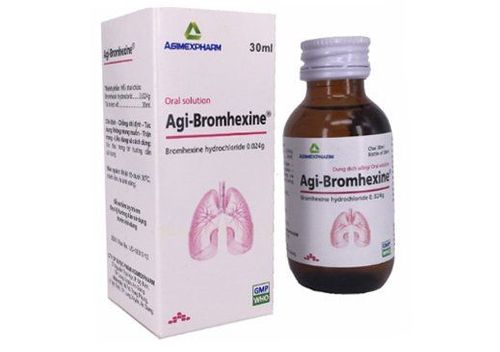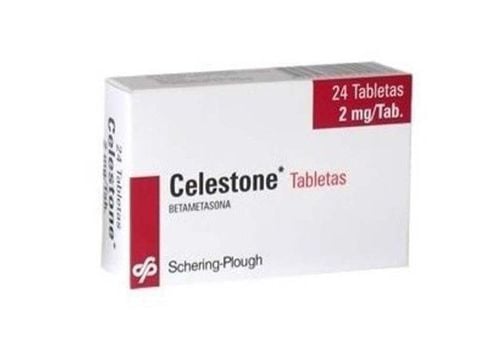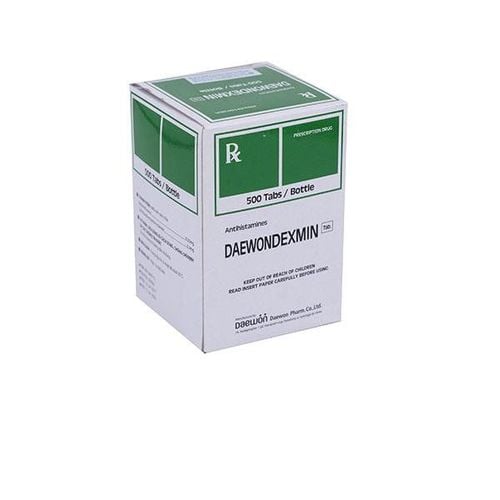This is an automatically translated article.
Angioedema is an uncommon side effect of certain medications. Drug-induced angioedema can be dangerous for the patient, especially in the presence of respiratory angioedema.1. What is drug-induced angioedema?
Angioedema is defined as sudden swelling of the skin, subcutaneous organs, submucosa, respiratory tract or gastrointestinal tract. Angioedema without pitting is usually temporary (lasting only 7 days) and can appear anywhere on the body. Drug-induced angioedema may or may not be allergic. Allergic angioedema caused by IgE and Histamine. Nonallergic angioedema is usually caused by elevated bradykinin, including genetics or ACE inhibitors. In addition, some drug classes, including NSAIDs, can also cause allergic angioedema and non-allergic angioedema.Depending on the causative mechanism and the severity of the symptoms of angioedema, the treatment will be different. According to anatomical location, airway swelling is the most worrisome angioedema site due to its impact on the respiratory tract. Respiratory angioedema is an excessive passive dilation of blood vessels, causing swelling and increased secretions in the airways. Dilated blood vessels, a lot of secretions, and the airways cannot be dilated, which will cause the patient to suffocate, which can lead to respiratory failure, even death.

Phù mạch do thuốc
2. Two types of drug-induced angioedema
2.1 Allergic Angioedema Allergic angioedema can be caused by food, insect venom, pollen or drugs and is characterized by previous exposure to the allergen. Drugs associated with allergic angioedema include: Antibiotics (most commonly beta-lactams and quinolones), neuromuscular blocking agents and iodinated contrast agents.Allergic angioedema causes increased vascular permeability, increased extravasation into tissues. Allergens cause mast cells (mast cells) to accumulate, releasing inflammatory substances such as histamine. The inflammatory process associated with IgE is classified as a type 1 reaction, which can cause anaphylaxis.
Allergic angioedema is often accompanied by urticaria. Treatment of allergic angioedema on the skin is mainly using antihistamines H1, H2 or glucocorticoids.
2.2 Non-allergic angioedema Non-allergic angioedema is caused by the following 2 groups of drugs:
ACE inhibitors ACE inhibitors are widely used for cardiovascular patients, especially those with hypotension . Angioedema caused by ACE inhibitors has an incidence of 0.1 - 6%. The risk of angioedema is higher in smokers, women, people of color, history of allergies, and over 65 years of age. Angioedema due to ACE inhibitors usually causes symptoms in the lips, peripheral areas, and gastrointestinal epithelium. This reaction can appear within 1 week to several months or even years after starting treatment.
Regarding the pathogenesis, ACE inhibitors act on angiotensin-activating enzymes in the paraglomerular apparatus and on other ACEs located in the respiratory tract (typically kininase II - an enzyme responsible for the breakdown of bradykinin). When kininase is inhibited, bradykinin is elevated in the blood. Next, bradykinin causes vasodilation. As a result, capillaries are dilated, blood is stagnation, increased permeability increases extracellular fluid escape, increased mucus secretion and increased airway edema. Finally cause angioedema. This complication is more likely to occur in people with a congenital deficiency of the enzymes carboxypeptidase-N and aminopeptidase-P (an enzyme that breaks down bradykinin).
In terms of treatment, ACE-inhibitor-induced angioedema is not histamine-related and does not respond to traditional treatments for IgE-related reactions. Recommendations for this condition include: Stopping ACE inhibitors and providing appropriate treatment options. Patients need to inform the doctor about the phenomenon of angioedema so that measures can be taken to use another group of drugs. Patients should not arbitrarily quit or switch to another drug because it can be dangerous.
Angioedema caused by ACE inhibitors has a similar mechanism to hereditary angioedema, so it can be treated by using drugs to treat hereditary angioedema. Icatibant (Firazyr) - a bradykinin B2 receptor antagonist and ecallantide (Kalbitor) - a human serum kallikrein inhibitor, can reduce bradykinin overproduction.
Alternatively, patients with angioedema due to ACE inhibitors can be switched to an angiotensin receptor blocker. However, caution should be exercised because patients may still develop angioedema while taking angiotensin receptor blockers. This is because the rate of cross-reactivity between ACE inhibitors and angiotensin receptor blockers is about 7 to 17%.

Phù mạch do thuốc ức chế men chuyển
Non-steroidal anti-inflammatory drugs (NSAIDs) NSAIDs are the second most common cause of hypersensitivity reactions after beta-lactams. Aspirin is the most common cause of anaphylaxis. Angioedema and urticaria are the most common side effects of NSAIDs. Facial effects in NSAID-induced angioedema mainly occur in the periorbital skin. The incidence of angioedema caused by NSAIDs is 0.1 - 0.3%. However, in patients with a history of chronic rhinitis, asthma or urticaria, the incidence of angioedema may be as high as 20 to 30%. Treatment-wise, hypersensitivity to an NSAID is a hypersensitivity reaction. , if present within 30 minutes or earlier, may be related to IgE. Oral tolerance to aspirin should be tested to determine whether the patient is allergic to only one NSAID or to all NSAIDs. If the patient tolerates aspirin on testing, it can be determined that the patient is allergic to only one group of NSAIDs with a similar chemical structure and not to all NSAIDs. The treatment would be to avoid the use of NSAIDs in that chemical group. The more common forms of angioedema associated with NSAID use can appear within 1 hour of ingestion, predictably through hyperplasia. Proinflammatory leukotriene production associated with COX 1 inhibition. This reaction may appear at first use. And patients can use COX 2 inhibitors instead. However, there is still a small percentage of patients with cross-allergic reactions to COX 2 inhibitors. Patients with cross-sensitivity to NSAIDs may receive acetaminophen because of its weak ability to inhibit COX 1. .In NSAID-sensitive patients, treat first with a low dose of a non-sedating antihistamine and a leukotriene receptor antagonist to prevent angioedema.To determine whether the patient has drug-induced angioedema or the underlying cause. In other patients, medical history, known allergies, drug characteristics, presence of urticaria, and location of angioedema should be assessed. The treatment of drug-induced angioedema involves treating the cause of the angioedema and preventing its recurrence in the future.
Please dial HOTLINE for more information or register for an appointment HERE. Download MyVinmec app to make appointments faster and to manage your bookings easily.




